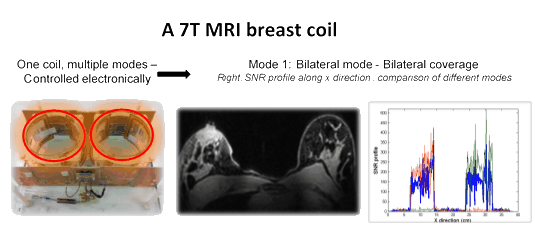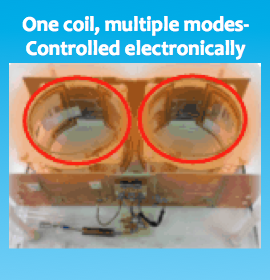
In magnetic resonance imaging (MRI), the available signal is tied to the magnetic field strength. High field MRI has higher intrinsic signal-to-noise ratio (SNR), which can be traded for higher resolution or reduced scan time. However, the higher magnetic field also leads to a higher larmor frequency and shorter wavelength, which can cause a non-uniform excitation pattern. Further, in multi-element radio frequency (RF) coil design, the coupling between two elements complicates tuning and perturbs the RF field distribution. “Parallel RF transmission” allows RF field tailoring by using multiple RF coils and multiple transmitters, but this is considered an expensive approach. Our group has utilized “forced-current excitation” (FCE) to alleviate these problems in high field MRI. In this paper, we present a 7 Tesla breast coil that is designed using this approach. Using only one transmit channel, the coil is able to deliver equal current to multiple elements despite differences in loading, which alleviates the problem of coupling and reduces the complexity of tuning. Additionally, to facilitate its clinical use in breast imaging, this coil was designed to operate in either bilateral mode or unilateral mode, controlled electronically using diode switches. The bilateral mode allows for bilateral coverage, which is often preferred because of simpler interpretation of the results, while the unilateral mode benefits from higher SNR, reduced RF exposure, and better power efficiency which may facilitate high power applications such as proton-decoupled second-nuclei studies. Bench measurements and MRI experiments, including in-vivo studies, were conducted to verify the performance of the coil. The coil demonstrates uniform excitation over the region of interest, as well as advantages in coverage and power efficiency in the respective modes.

